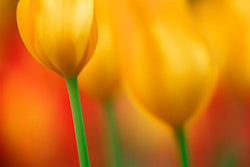Tony Sweet (tonysweet.com) is a professional photographer, author, lecturer, and workshop instructor living in Eldersburg, Maryland. He and Susan Milestone own and operate Visual Artistry Photography Workshops, teaching throughout the US and Canada. Tony's photography is published worldwide in every medium and is represented by Getty Images. His iPhone photography is represented by Aurora Photos. Tony has authored five books on the art of photography, including Fine Art Flower Photography (2005).
Tony Sweet: "It’s a good idea, every so often, to have an idea of what you want to photograph when you go out to make pictures. For me, it really depends on looking outside when I wake up to check conditions. For example, when there is dew on the car and a clear sky, I can expect to have a great opportunity to photograph dewdrops in bright sunlight, which is one of my favorite things to do. Why would one want to go out to photograph nature and be happy about an early bright sun? Normally, don’t nature/outdoor photographers want to photograph flowers/macro work in subdued light?
"What I wanted to get in this bright, late morning light was some strongly backlit dewdrops to hopefully create big round specular highlights. The large round circles in this image are strongly backlit out of focus highlights, which is impossible except in bright sun. It’s really not as easy as it sounds, because even if there are many dew drops on flowers and leaf petals, getting into the right position and finding the right situation can take quite a bit of looking around. The right situation is shooting a strongly backlit dew drop area to maximize the possibility of seeing the big, round orbs and mini-rainbows.
"A friend of mine was shooting this scene as I was leaving. Upon being called over to look through her finder, I quickly began shooting a similar subject in the same area. This subject is remarkable in its openness and back lighting. It was the beginning of a bloom, with only the "sticks" upon which the flower will grow in the coming week. Actually, upon returning the following week, this scene didn’t exist as the flower filled in the lines, and they were no longer visible. John Shaw says, "Shoot it when you see it." As the sunlight was getting hotter and changing angles by the minute, we had limited time to get this image. The hub of this image was placed in the upper third area in the frame at a location where the most and brightest highlights are visible. The round highlights are a direct result of shooting at the widest (roundest) aperture, as bright highlights tend to take on the shape of the lens diaphragm. I had to hold my hand in front of the lens in order to shield it against the bright sun and to avoid lens flare.
"How did I know I had lens flare? It’s not always the obvious colored flare lines in the finder. Lens flare can be difficult to detect and can manifest itself as a slightly washed out area in your image in addition to the obvious classic lens flare markings. One sure way is to look at the front element of your lens. If there is a small pin spot on the lens, that’s lens flare. To my good fortune, a little pre-visualization, some cooperation from Mother Nature, and a little help from my friend combined to create this image."
TONY'S EQUIPMENT FOR THE SHOT
Camera: Nikon D3X camera
Lens: Nikkor 300mm f/4 lens
Settings: ISO 800, f/11, 30 seconds
Other: 1.4x teleconverter. White Balance Setting: "Cloudy"
Stay connected to Tony's work: Website | Blog | Facebook | Twitter
RELATED ARTICLES
How Do I Learn Photography?
How Do You Know When You Are Good? Canon Explorers of Light Answer
How We Got That Shot - Matt and Agnes Hage




